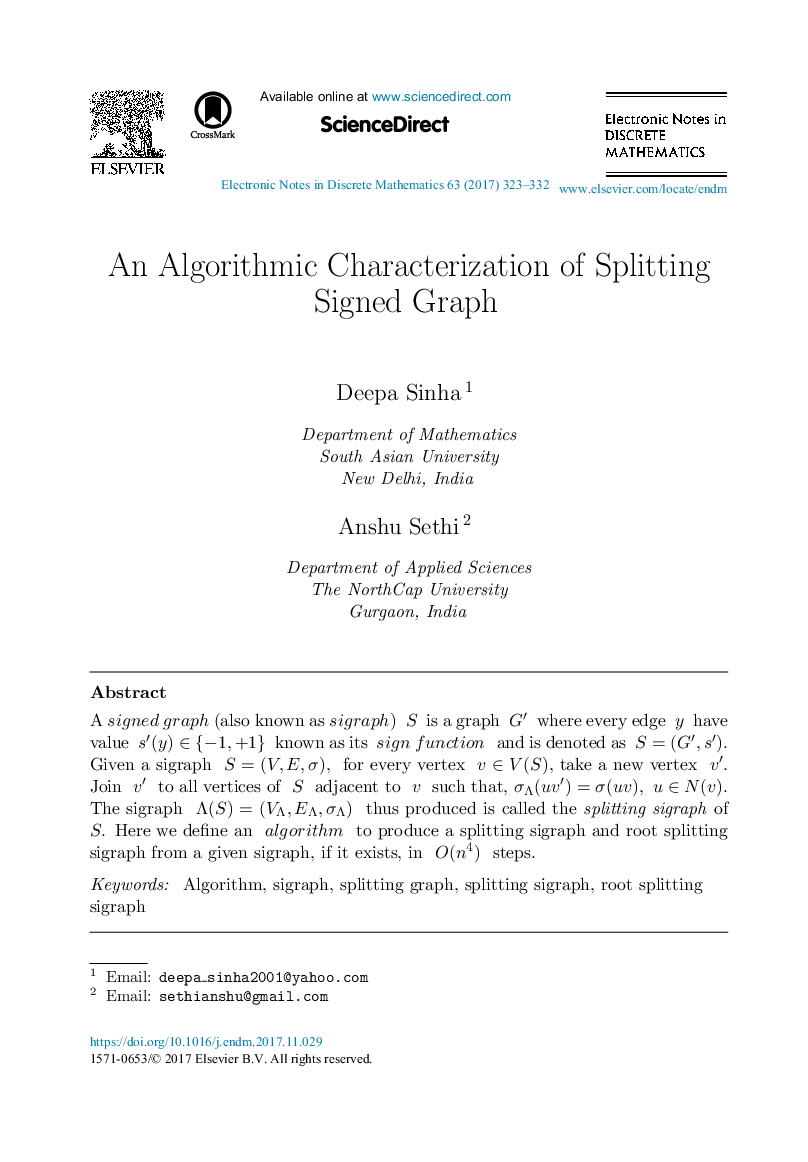| Article ID | Journal | Published Year | Pages | File Type |
|---|---|---|---|---|
| 8903457 | Electronic Notes in Discrete Mathematics | 2017 | 10 Pages |
Abstract
A signed graph (also known as sigraph) S is a graph Gâ² where every edge y have value sâ²(y)â{â1,+1} known as its sign function and is denoted as S=(Gâ²,sâ²). Given a sigraph S=(V,E,Ï), for every vertex vâV(S), take a new vertex vâ². Join vâ² to all vertices of S adjacent to v such that, ÏÎ(uvâ²)=Ï(uv), uâN(v). The sigraph Î(S)=(VÎ,EÎ,ÏÎ) thus produced is called the splitting sigraph of S. Here we define an algorithm to produce a splitting sigraph and root splitting sigraph from a given sigraph, if it exists, in O(n4) steps.
Keywords
Related Topics
Physical Sciences and Engineering
Mathematics
Discrete Mathematics and Combinatorics
Authors
Deepa Sinha, Anshu Sethi,
